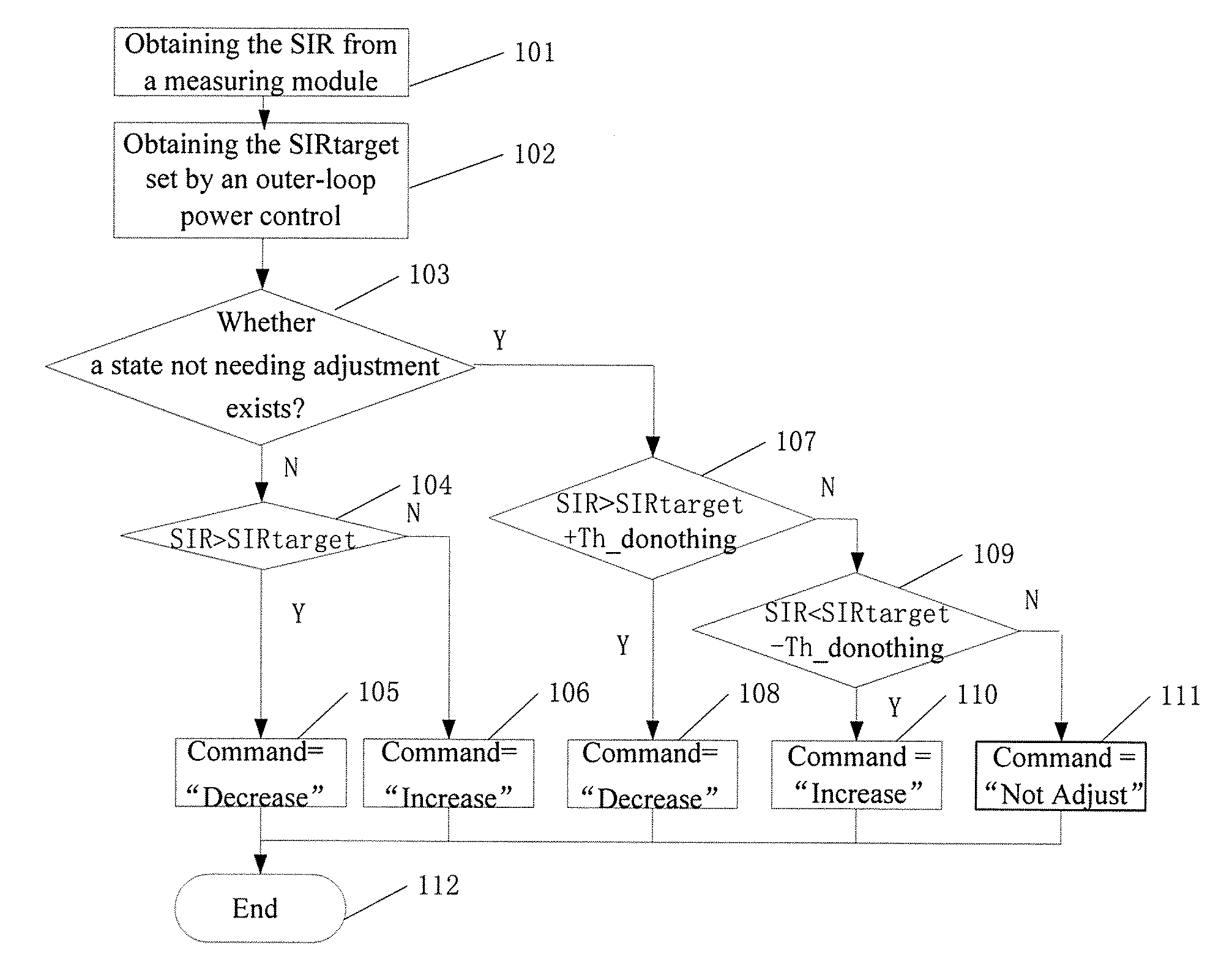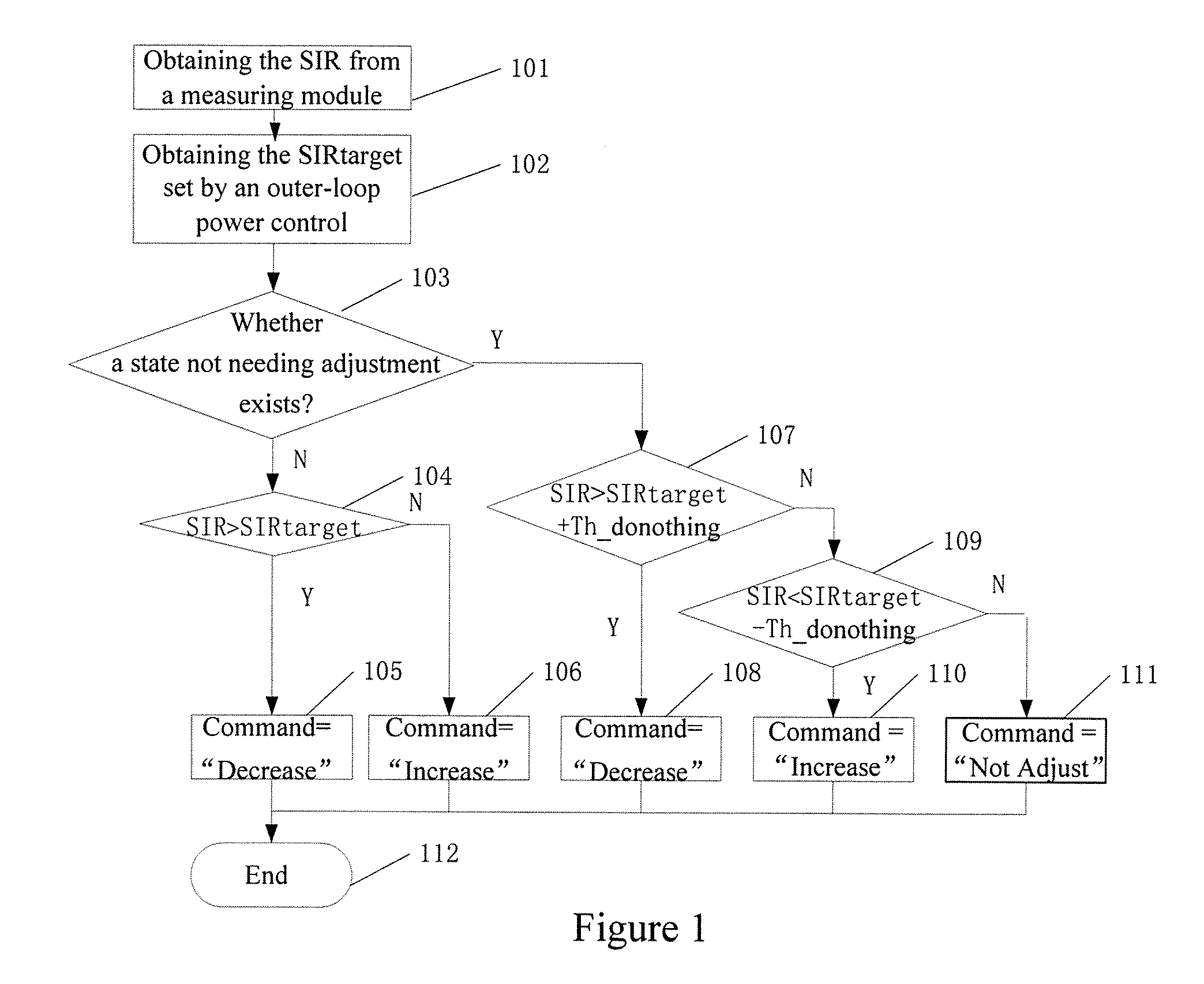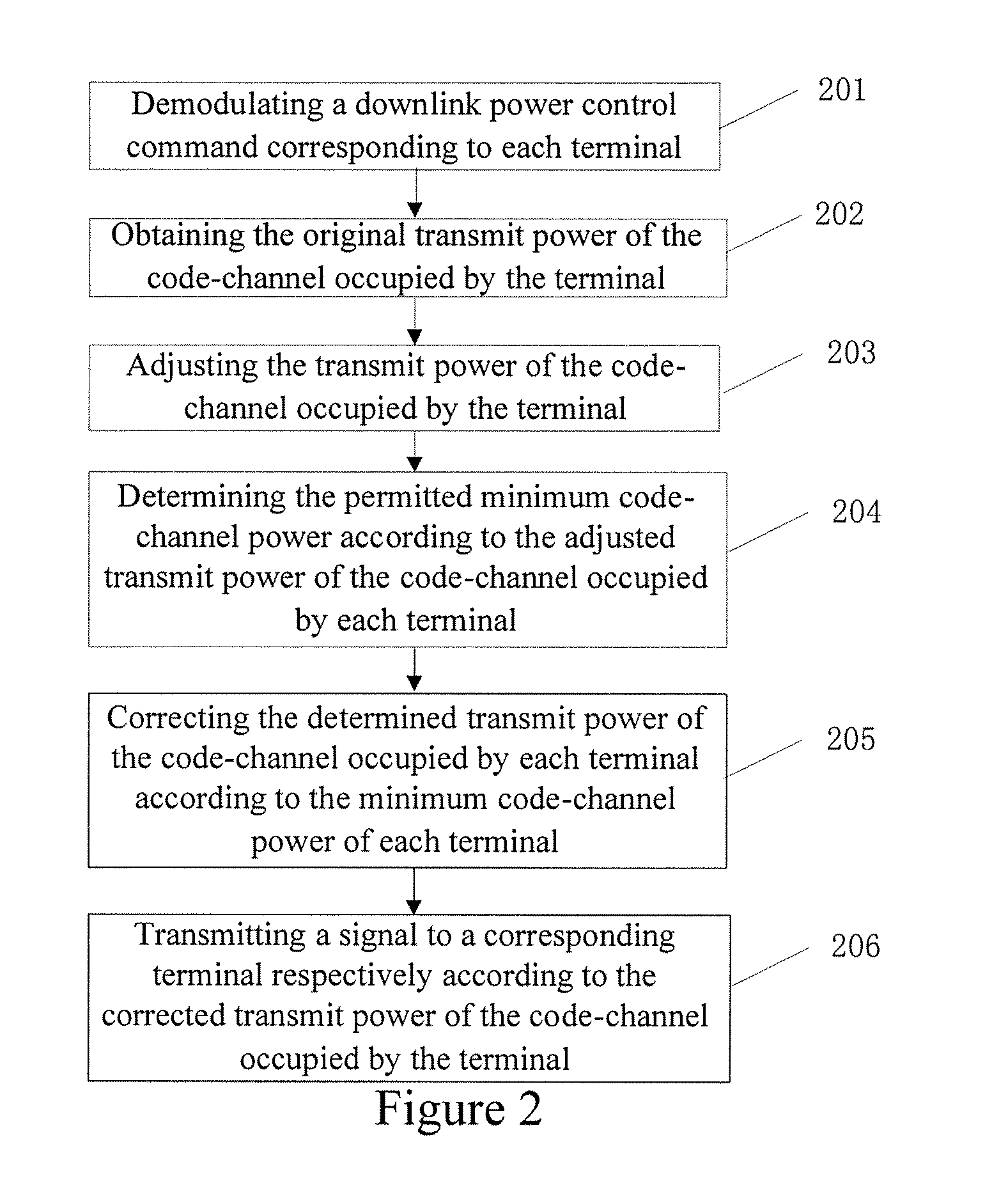Power Control Method for Base Station
a power control and wireless technology, applied in power management, antennas, electrically long antennas, etc., can solve the problems of large power waste, limited system capacity, increased interference, etc., and achieve the effect of reducing the power difference between different signals, improving system capacity, and ensuring the quality of system communication
- Summary
- Abstract
- Description
- Claims
- Application Information
AI Technical Summary
Benefits of technology
Problems solved by technology
Method used
Image
Examples
Embodiment Construction
[0031]The concept of the present invention is as follow: when a base station adjusts a signal transmit power with a designated or predefined step size according to a received power control command of the terminal, the transmit power of the code-channel occupied by each terminal is calculated; then, the minimum code-channel power permitted by all code-channels in current carrier frequency and current time slot is determined according to the maximum code-channel power in the code-channels occupying the carrier frequency and the time slot; and then the signal transmit powers corresponding to all the code-channels in the current carrier frequency and the current time slot, which are adjusted according to the power control command, are corrected according to the minimum code-channel power; in all the code-channels of the current carrier frequency and the current time slot, if a power of a code-channel is lower than the permitted minimum code-channel power, the power will be corrected as ...
PUM
 Login to View More
Login to View More Abstract
Description
Claims
Application Information
 Login to View More
Login to View More - R&D
- Intellectual Property
- Life Sciences
- Materials
- Tech Scout
- Unparalleled Data Quality
- Higher Quality Content
- 60% Fewer Hallucinations
Browse by: Latest US Patents, China's latest patents, Technical Efficacy Thesaurus, Application Domain, Technology Topic, Popular Technical Reports.
© 2025 PatSnap. All rights reserved.Legal|Privacy policy|Modern Slavery Act Transparency Statement|Sitemap|About US| Contact US: help@patsnap.com



